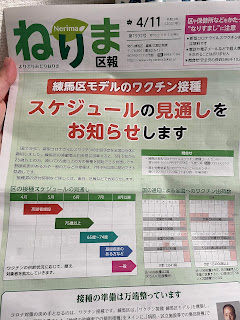When I moved to Japan in 2002 to teach English in Osaka, I knew next to nothing about daily life in Japan - especially the food! When I think back to my ignorance, I shake my head in wonder. I was young, energetic, and enthusiastic. I was not knowledgeable or, as my husband likes to say, living in reality.
I remember going to the grocery store and staring at items, trying to figure out what they were and how they were used. This was before the days of everyone having cell phones (I didn’t), so I couldn’t just snap a photo and send it to someone or use Google Translate. Sometimes I was brave enough to ask a friend, but not always. I often relied on asking friends over for cooking dinner together or inquiring when I was invited over to other people’s houses (“This is so delicious! What is it?” “I’ve never heard of that. What does it look like?”).
I lived in an apartment that was contracted by the city. Over the years, many English teachers from abroad had lived in that apartment, several of whom left little things for the next tenant. While going through these items, I found a very helpful book that had photos of products in Japanese grocery stores, along with the names in Japanese and English. This grocery store guidebook proved to be invaluable to me as I tried to learn about the local ingredients. I knew what flour to buy for baking bread and so forth. The one thing it didn’t tell was how to use the foods I had never seen before!
One of these foods I had never before experienced was konnyaku. Either white, gray, or green in color, with a extremely firm jello-like texture, this food was completely new to me. Served in several popular savory recipes, like oden, nikkujaga, and more (all of which I ate for the first time after moving to Japan), it kept popping up on my radar. But I still didn’t know WHAT it really was.
Since first being introduced to konnyaku, I have been a fan. I learned it was made from a root, but didn’t know much beyond that. When planning our trip to Gunma, my husband asked if I would be interested in going to a konnyaku factory. He barely finished the question before I replied with a resounding “Yes!” So, he quickly added Konnyaku Park to our agenda.
Konnyaku Park combines a factory, classes, gift shop, and restaurant into an educational excursion destination.
We started with the factory tour, where we were able to peek down at huge machines processing and packaging konnyaku for sale.
Along the way we learned that konnyaku is made in two ways - from a konjac potato (Araceae) or powder. It is high in fiber and low in calories, making it a popular food for people trying to loose weight. The konjac potato is very delicate and takes 2 to 3 years to harvest. They also don’t store very well, which is why it is often turned into powder.
Konnyaku is made into lots of different products, like jelly that Japanese kids love to snack on and noodles for adding to soup for extra body. The gift shop is packed with so many different items made from konnyaku.
Always up for getting our hands dirty, we signed up to make konnyaku. The hands-on class had us mixing the powdered konnyaku with water until it was a very thick consistency. Then we divided the mixture into three bowls so we could make plain, seaweed, and yuzu flavored konnyaku. We rolled the raw dough into ping pong sized balls and then boiled them until cooked (probably 10 minutes).
After making our own konnyaku (that was packaged up for us to take home), we were taken to the all-you-can-eat free restaurant. People can try konnyaku prepared in a variety of ways. While I enjoy konnyaku, it was a bit much to have a meal entirely made from the one ingredient.
With our bellies full and a little bit of newfound knowledge in our heads, we continued on our way to see and do more in Gunma.




























